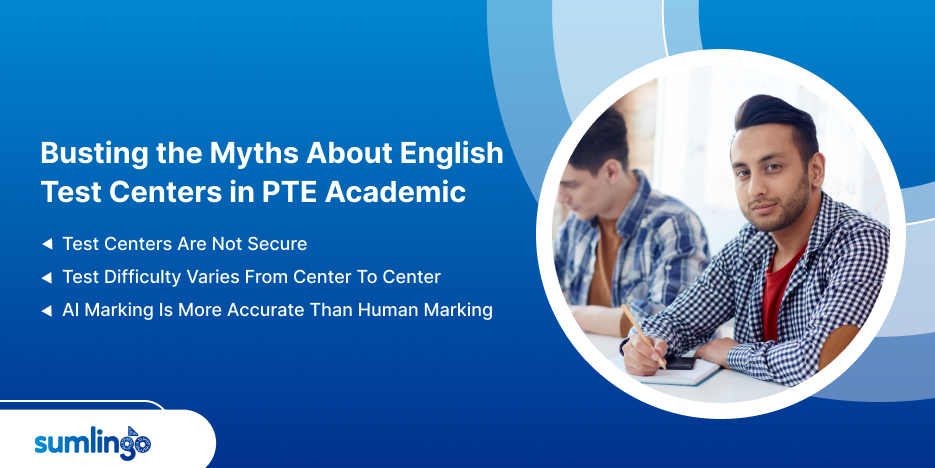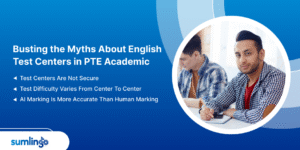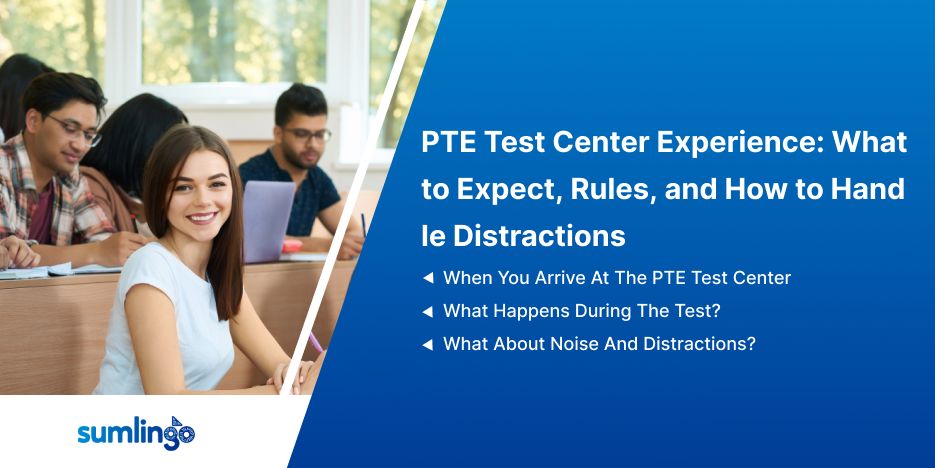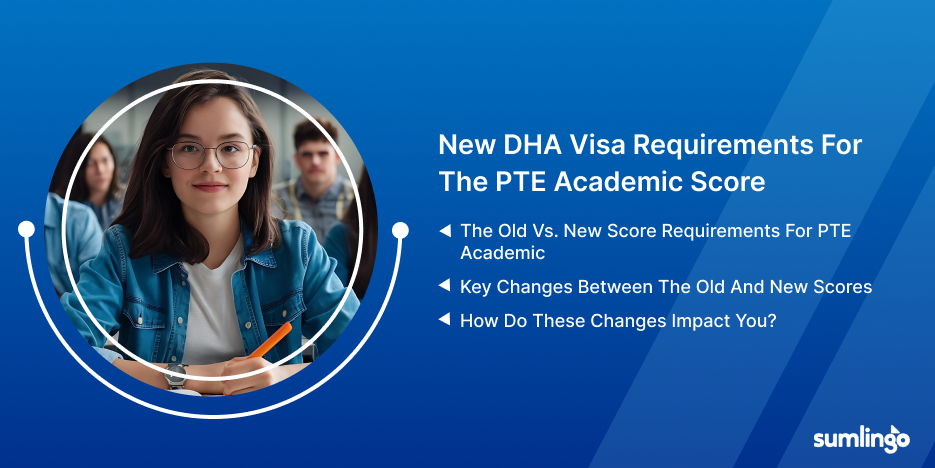When it comes to taking the PTE Academic test, there are many myths and misconceptions that can cause unnecessary worry. From security concerns to the accuracy of AI scoring, students often hear conflicting opinions about what to expect at test centers. In this blog, we’ll explore some of the most common myths about PTE Academic test centers and reveal the facts to help you feel more confident on test day.
Myth 1: Test Centers Are Not Secure: One of the most common myths is that test centers are not secure, and it’s easy to cheat. Many students worry about whether the exam is fair and whether they could get away with dishonesty.
The Truth: PTE Academic test centers are designed with strong security measures to ensure fairness for all test-takers. To prevent cheating, test centers use biometric identity checks, such as palm vein scans and photographs, which make sure that the person taking the test is indeed the registered candidate. Additionally, surveillance cameras monitor the test room throughout the exam, and staff members are present to observe test-takers closely. This multi-layered security system helps create a controlled environment
Are you ready to test your skills?
Myth 2: Test Difficulty Varies from Center to Center: Another myth is that some test centers make the exam harder than others. You may have heard that certain centers make the test more difficult based on their location or other factors.
The Truth: In reality, the PTE Academic exam is a standardized test, which means that the difficulty level of the exam is the same, regardless of where you take it. The test is designed to measure your English language skills based on a set of standardized criteria, ensuring that all candidates have the same experience. If you feel that the test was harder at one center than another, it is most likely due to factors like the testing environment or the individual’s preparedness, not the difficulty of the test itself.
Myth 3: AI Marking Is More Accurate Than Human Marking: Some students believe that AI marking is always more accurate and fair than human marking. With the rise of technology, it’s easy to assume that AI systems can better judge writing and speaking tasks.
The Truth: While AI plays a role in scoring PTE Academic tests, it is not the only tool used. AI is very good at evaluating certain aspects of your test, such as grammar, spelling, and vocabulary. However, human examiners are still an essential part of the evaluation process, especially when it comes to understanding the context of your answers. Also, human examiners can make adjustments based on real-time observations, like how clearly you speak or how well you’ve structured your written answers. So, it’s not just about AI; it’s about a balanced combination of technology and human judgment to ensure the test is graded fairly.
Myth 4: You Need a Native-Level Accent to Score Well: Another common myth is that you must speak with a native-level accent to get a good score in the speaking section of the PTE Academic exam.
The Truth: Your accent doesn’t matter as much as you might think. What matters most is how clearly and intelligibly you speak. As long as your answers are understandable, you can score well, regardless of whether
you have an American, British, or any other accent. The goal is to communicate effectively in English, not to sound like a native speaker. So, focus on pronunciation, pacing, and clarity rather than trying to mimic a particular accent.
Myth 5: Writing More Words Means a Higher Score: Some students believe that writing more words than the suggested word count will automatically give them a better score in the writing section. It’s tempting to think that longer essays must be better, but this is not true.
The Truth: PTE Academic has a specific word limit for the writing section. While it is important to meet the minimum word count to avoid losing marks, writing more than necessary won’t give you extra points. In fact, it’s more important to focus on quality over quantity. A clear, concise answer that directly addresses the question is always better than a long, off-topic response. You should stick to the word limit and focus on writing a well-structured answer.
Myth 6: You Can Take Breaks During the Exam: Some students think that they can take breaks at all during the PTE Academic exam
The Truth: Unlike some other exams, the PTE Academic is a continuous test, with no scheduled breaks in between. The entire test must be completed in one sitting, so it’s important to manage your time carefully and stay focused. While this may sound challenging, the design of the test ensures that you will be able to complete each section within the allotted time without feeling rushed.
Are you ready to test your skills?
In conclusion
It’s easy to get caught up in myths and rumours about English test centers, especially when preparing for a high-stakes exam like PTE Academic. However, understanding the reality behind these myths can help reduce your stress and set you up for success. By knowing the facts about security, test difficulty, marking, and other common concerns, you can approach your PTE exam with more confidence.










